Potřebujeme váš souhlas k využití jednotlivých dat, aby se vám mimo jiné mohly ukazovat informace týkající se vašich zájmů. Souhlas udělíte kliknutím na tlačítko „OK“.
ASTM D3999/D3999M-11e1
Standard Test Methods for the Determination of the Modulus and Damping Properties of Soils Using the Cyclic Triaxial Apparatus (Withdrawn 2020) (Includes all amendments And changes 4/22/2020).
Automaticky přeložený název:
Standardní zkušební metody pro stanovení modulu a tlumení vlastnosti zemin Použití Cyklické trojosého Přístroje
NORMA vydána dne 1.11.2011
Informace o normě:
Označení normy: ASTM D3999/D3999M-11e1
Poznámka: NEPLATNÁ
Datum vydání normy: 1.11.2011
Kód zboží: NS-25659
Počet stran: 16
Přibližná hmotnost: 48 g (0.11 liber)
Země: Americká technická norma
Kategorie: Technické normy ASTM
Kategorie - podobné normy:
Anotace textu normy ASTM D3999/D3999M-11e1 :
Keywords:
yclic triaxial, damping coefficient, laboratory test, physical properties, secant modulus, ICS Number Code 13.080.99 (Other standards related to soil quality)
Doplňující informace
| Significance and Use | ||||||||||||||||||||||||||||
|
5.1 The cyclic triaxial test permits determination of the secant modulus and damping coefficient for cyclic axial loading of a prismatic soil specimen in hydrostatically consolidated, undrained conditions. The secant modulus and damping coefficient from this test may be different from those obtained from a torsional shear type of test on the same material. 5.2 The secant modulus and damping coefficient are important parameters used in dynamic, performance evaluation of both natural and engineered structures under dynamic or cyclic loads such as caused by earthquakes, ocean wave, or blasts. These parameters can be used in dynamic response analyses including, finite elements, finite difference, and linear or non-linear analytical methods. 1.1 These test methods cover the
determination of the modulus and damping properties of soils in
either intact or reconstituted states by either load or stroke
controlled cyclic triaxial techniques. The standard is focused on
determining these properties for soils in hydrostatically
consolidated, undrained conditions.
1.2 The cyclic triaxial properties of initially saturated or unsaturated soil specimens are evaluated relative to a number of factors including: strain level, density, number of cycles, material type, and effective stress. 1.3 These test methods are applicable to both fine-grained and coarse-grained soils as defined by the unified soil classification system or by Practice D2487. Test specimens may be intact or reconstituted by compaction in the laboratory. 1.4 Two test methods are provided for using a cyclic loader to determine the secant Young's modulus (1.4.1 Test Method A—This test method requires the application of a constant cyclic load to the test specimen. It is used for determining the secant Young's modulus and damping coefficient under a constant load condition. 1.4.2 Test Method B—This test method requires the application of a constant cyclic deformation to the test specimen. It is used for determining the secant Young's modulus and damping coefficient under a constant stroke condition. 1.5 The development of relationships to aid in interpreting and evaluating test results are left to the engineer or office requesting the test. 1.6 Limitations—There are certain limitations inherent in using cyclic triaxial tests to simulate the stress and strain conditions of a soil element in the field during an earthquake, with several summarized in the following sections. With due consideration for the factors affecting test results, carefully conducted cyclic triaxial tests can provide data on the cyclic behavior of soils with a degree of accuracy adequate for meaningful evaluations of modulus and damping coefficient below a shearing strain level of 0.5 %. 1.6.1 Nonuniform stress conditions within the test specimen are imposed by the specimen end platens. 1.6.2 A 90° change in the direction of the major principal stress occurs during the two halves of the loading cycle on isotropically confined specimens. 1.6.3 The maximum cyclic axial stress that can be applied to a saturated specimen is controlled by the stress conditions at the end of confining stress application and the pore-water pressures generated during undrained compression. For an isotropically confined specimen tested in cyclic compression, the maximum cyclic axial stress that can be applied to the specimen is equal to the effective confining pressure. Since cohesionless soils cannot resist tension, cyclic axial stresses greater than this value tend to lift the top platen from the soil specimen. Also, as the pore-water pressure increases during tests performed on isotropically confined specimens, the effective confining pressure is reduced, contributing to the tendency of the specimen to neck during the extension portion of the load cycle, invalidating test results beyond that point. 1.6.4 While it is advised that the best possible intact specimens be obtained for cyclic testing, it is sometimes necessary to reconstitute soil specimens. It has been shown that different methods of reconstituting specimens to the same density may result in significantly different cyclic behavior. Also, intact specimens will almost always be stronger and stiffer than reconstituted specimens of the same density. 1.6.5 The interaction between the specimen, membrane, and confining fluid has an influence on cyclic behavior. Membrane compliance effects cannot be readily accounted for in the test procedure or in interpretation of test results. Changes in pore-water pressure can cause changes in membrane penetration in specimens of cohesionless soils. These changes can significantly influence the test results. 1.7 The values stated in either SI units or inch-pound units [presented in brackets] are to be regarded separately as standard. The values stated in each system may not be exact equivalents; therefore, each system shall be used independently of the other. Combining values from the two systems may result in non-conformance with the standard. Reporting of test results in units other than SI shall not be regarded as nonconformance with this test method. 1.8 All observed and calculated values shall conform to the guide for significant digits and rounding established in Practice D6026. The procedures in Practice D6026 that are used to specify how data are collected, recorded, and calculated are regarded as the industry standard. In addition, they are representative of the significant digits that should generally be retained. The procedures do not consider material variation, purpose for obtaining the data, special purpose studies, or any considerations for the objectives of the user. Increasing or reducing the significant digits of reported data to be commensurate with these considerations is common practice. Consideration of the significant digits to be used in analysis methods for engineering design is beyond the scope of this standard. 1.8.1 The method used to specify how data are collected, calculated, or recorded in this standard is not directly related to the accuracy to which the data can be applied in design or other uses, or both. How one applies the results obtained using this standard is beyond its scope. 1.9 This standard does not purport to address all of the safety concerns, if any, associated with its use. It is the responsibility of the user of this standard to establish appropriate safety and health practices and determine the applicability of regulatory limitations prior to use. |
||||||||||||||||||||||||||||
| 2. Referenced Documents | ||||||||||||||||||||||||||||
|
Podobné normy:
Historická
1.10.2010
Historická
1.7.2010
Historická
1.7.2008
Historická
1.12.2011
Historická
1.11.2009
Historická
1.8.2013
Odebírejte informace o nově vydaných normách ZDARMA:
Chcete pravidelně odebírat informace o nově vycházejících normách z celého světa a to zcela zdarma?
Přihlašte se k odběru. Vše je velice jednoduché a absolutně ZDARMA.
Na výběr máte vydavatele z celého světa.


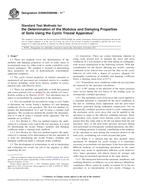
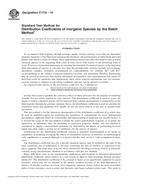 ASTM C1733-10
ASTM C1733-10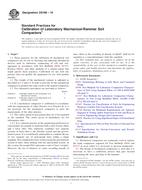 ASTM D2168-10
ASTM D2168-10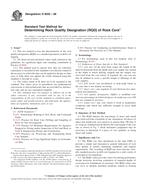 ASTM D6032-08
ASTM D6032-08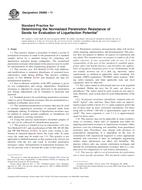 ASTM D6066-11
ASTM D6066-11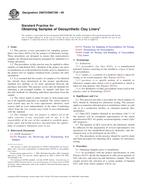 ASTM D6072/D6072M-09..
ASTM D6072/D6072M-09..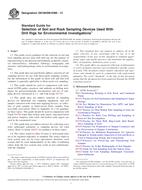 ASTM D6169/D6169M-13..
ASTM D6169/D6169M-13..
 Cookies
Cookies
